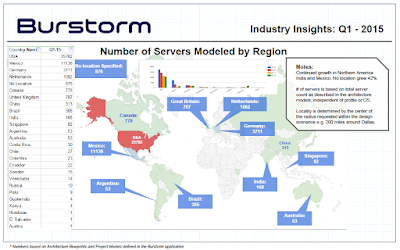Twitter Feed
Leading Federal Integrators Address Tactical Cloud Computing
Yesterday during the first annual Government IT Conference and Expo, tactical cloud computing was cited as a critical component within this new paradigm. Joining me to address the issue were:…
Carpathia Creates Government Solutions Business Unit
In a strong statement of focus, Carpathia Hosting has announced the formation of Carpathia Government Solutions, a unit dedicated to providing solutions specifically for federal civilian and defense agencies. This…
INPUT FedFocus 2010
Please join me at the 7th Annual FedFocus Conference, November 5, 2009, at the Ritz Carlton in McLean, VA. This conference has been designed to provide crucial information on upcoming…
Dataline, Lockheed Martin, SAIC, Unisys on Tactical Cloud Computing
I’m proud to announce that representatives from Lockheed Martin, SAIC, and Unisys will join me in a Tactical Cloud Computing “Power Panel” at SYS-CON’s 1st Annual Government IT Conference &…
GSA, DoD and NCOIC to Collaborate on Government Cloud Computing
Yesterday, during the NCOIC Cloud Computing Workshop, collaboration seemed to be the focus as Katie Lewin, GSA Cloud Computing Initiative Program manager, and Dan Risacher, DoD Cloud Computing Storefront project…
FederalNewsRadio Highlights Government Cloud Computing
Last week’s Apps.gov announcement was the latest steps in the government’s “at the quick step” march into cloud computing. FederalNewsRadio, a Washington metro area media fixture, highlighted the event with…
NCOIC Officially Launches Cloud Computing Working Group
On Wednesday, 9 September 2009 the Network Centric Operations Industry Consortium (NCOIC) Technical Council formally approved the creation of a Cloud Computing Working Group (CCWG). Organizationally this new working group…
1 Billion Mobile Cloud Computing Subscribers !!
Yes. That’s what I said! A recent EDL Consulting article cites the rising popularity of smartphones and other advanced mobile devices as the driving force behind a skyrocketing mobile cloud…
NCOIC Holding Full-Day Cloud Computing Workshop
The Network Centric Operations Industry Consortium will be holding an all day Cloud Computing Workshop on September 21, 2009 in Fairfax, VA. Open to the public, this workshop will focus…
Pentagon Reviews Unisys Stealth
According to a Newtworkworld.com article, the United States Joint Forces Command (USJFC) is currently evaluating Unisys Stealth technology at the Joint Transformation Command for Intelligence (JTC-I) in Suffolk, Virginia. “Unisys…
as the linking of physical components and boxes together in way that addresses the organization’s needs. With this mindset, they focus on specific technical characteristics and capabilities. While these aspects still remain crucial to a successful deployment, the cloud solution architect must instead, visualize solutions as the linking together of compatible and interoperable services. With this viewpoint, the actual physical components are less of a concern and the service levels and service “-ilities” (maintainability, usability, portability, sustainability, etc.) rise in importance. They also must quantify the business economics of any delivered design. Many times economic aspects alone will define the difference between a new service launch and a new idea left on the shelf.
 |
|
Figure 1– Burnstorm cloud solution modeling software use
|
 |
|
Figure 2– Interactive solution design comparisons
|
( This content is being syndicated through multiple channels. The opinions expressed are solely those of the author and do not represent the views of GovCloud Network, GovCloud Network Partners or any other corporation or organization.)
( Thank you. If you enjoyed this article, get free updates by email or RSS – © Copyright Kevin L. Jackson 2015)
Cloud Computing
- CPUcoin Expands CPU/GPU Power Sharing with Cudo Ventures Enterprise Network Partnership
- CPUcoin Expands CPU/GPU Power Sharing with Cudo Ventures Enterprise Network Partnership
- Route1 Announces Q2 2019 Financial Results
- CPUcoin Expands CPU/GPU Power Sharing with Cudo Ventures Enterprise Network Partnership
- ChannelAdvisor to Present at the D.A. Davidson 18th Annual Technology Conference
Cybersecurity
- Route1 Announces Q2 2019 Financial Results
- FIRST US BANCSHARES, INC. DECLARES CASH DIVIDEND
- Business Continuity Management Planning Solution Market is Expected to Grow ~ US$ 1.6 Bn by the end of 2029 - PMR
- Atos delivers Quantum-Learning-as-a-Service to Xofia to enable artificial intelligence solutions
- New Ares IoT Botnet discovered on Android OS based Set-Top Boxes


